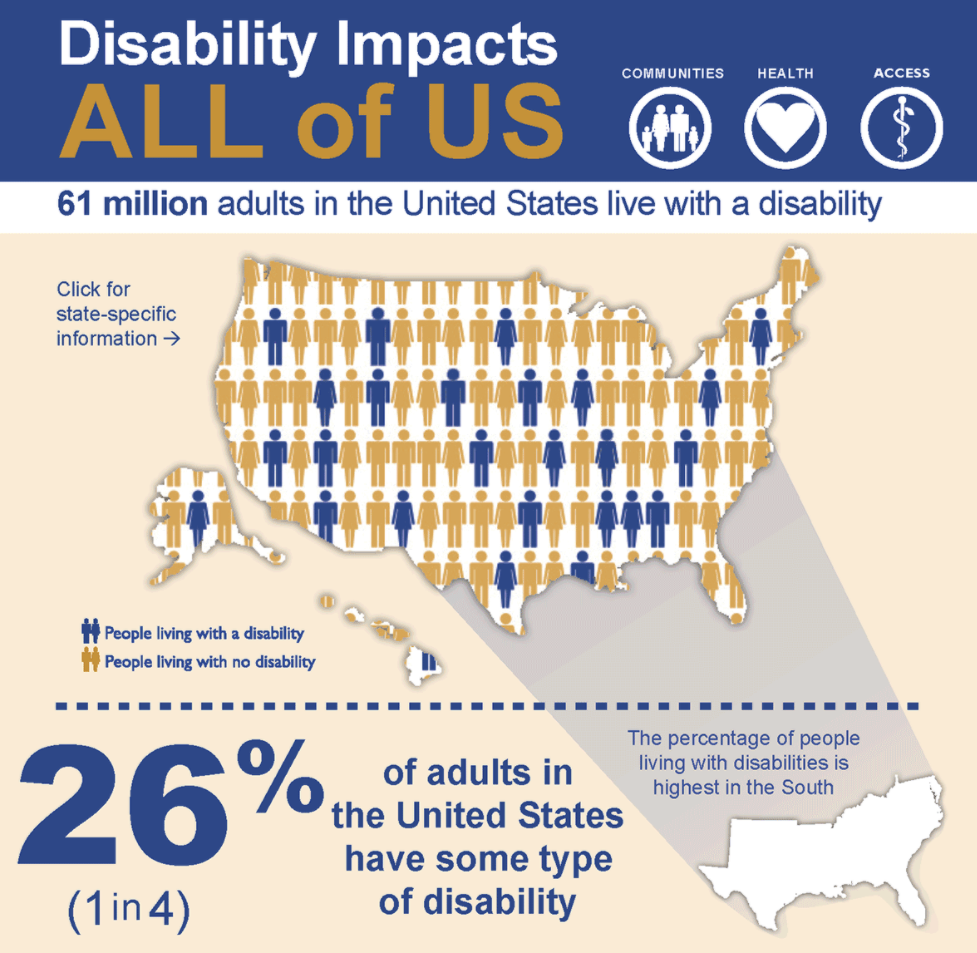
It has been almost two years since COVID hit the U.S. Although restaurants and grocery stores have started to open, we can’t deny that online grocery and delivery services have become a part of our lives, especially when working from home. According to Brick Meets Click and Mercatus, approximately 50% of U.S. households (63.8 million) purchased groceries online in October 2021, leading to an $8.1 billion in grocery sales.
With a high demand for online groceries and deliveries, popular services like Instacart, FreshDirect, and local grocery stores are tasked with ensuring an accessible online shopping experience for all customers. However, not every online retailer is compliant when the website is built, and they should pay closer attention to digital accessibility. By not doing so, they run the risk of costly legal actions and limiting their customer base. For example, Save-on-Foods, a supermarket company based in Western Canada, apologized to a blind man for removing some accessibility features when they updated its online shopping app. The update disabled the built-in screen reader—making it unable to access the home screen, read items, and past purchases.
According to the CDC, about 26% of the U.S. population (61 million) have some type of disability, including cognitive, behavioral, visual, auditory, etc. Furthermore, about one in four SNAP participants have a disability. For example, a visually impaired person may require a screen reader, high-contrast mode, or zoom feature to complete a grocery experience. Therefore, if an online service adopts digital accessibility to its website, it not only aids its users with disabilities, but it is beneficial to grow business, brand loyalty, and customer base. According to Brian Moyer, CEO of e-commerce provider Freshop, the percentage of sales by customers using screen readers can range from 0.5% to up to 20% for those businesses that have strived to engage people with disabilities.

Currently, more businesses are making their sites more accessible than they were years ago by following the WCAG guidelines. For example, they’ve started to allow users to turn on high-contrast or dark mode, stop videos, scale font size, change typeface, etc. The guidelines are detailed, but they require time and resources to interpret them and a lot of effort to implement them from a design and engineering perspective. In addition, most companies use tools or browser extensions like WAVE or Google Lighthouse to scan and evaluate high-level errors. However, those tools only cover 25% to 30% of the WCAG. The best way to assess whether a website is accessible is to have a disabled user go through the process and see what works and what doesn’t.
The goal of adopting accessibility for delivery services is to build an experience for all, regardless of their skill level or ability. Based on our accessibility evaluation of Instacart, we have come to the conclusion that, in order to ensure a consumer-facing platform is accessible, all brands should consider paying attention to color contrast and font size, ensuring the website is compatible with keyboard navigation, providing alt text for product images, accepting various payment options (for SNAP EBT cards), and more. By doing so, companies can attract different customer bases, generate more traffic, and grow their businesses.
References
- Grocers grapple with digital accessibility as e-commerce grows
- Record-Shattering Online Grocery Sales Highlight Need for Digital Accessibility
- US online grocery sales hit record $7.2 billion in June
- Oct 2021: U.S. Online Grocery Sales Stabilize at $8.1 Billion
- Save-On-Foods apologizes to B.C. man after accessibility features removed from shopping app
- Rosie lowers accessibility barriers to online grocery ordering
- Disability Impacts All of Us
